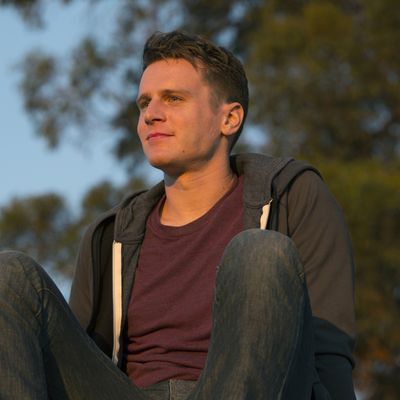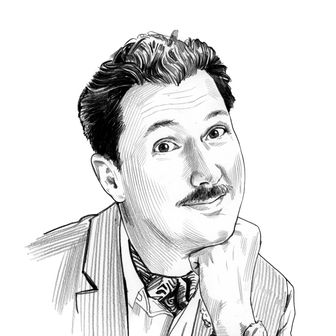
You can’t swing a rainbow-colored boa without hitting a gay character on television these days. They’re everywhere, from raising kids on Modern Family to serving in prison on Orange Is the New Black to performing formerly unspeakable sex acts on broadcast television’s How to Get Away With Murder. So why is it, with all the Ls, Gs, Bs, and even Ts on TV these days we can’t have one big gay show?
What do I mean by a big gay show? One that features mostly gay characters doing gay things with each other and having gay conversations about gay life and using gay words (like “brunch”). Looking, HBO’s dramedy about a group of gay male friends living and loving in San Francisco, will air its finale movie, capping off a two-season run, this Saturday. When it is gone, there will be zero such shows on the air. And it’s not like networks are lining up to launch another one. Before Looking, we hadn’t had one since The L Word went off the air in 2009 (the history of big gay shows — including series like Queer As Folk, Noah’s Arc, and Will and Grace — is short).
Yes, there are gay people all over television. According to GLAAD’s annual Where We Are on TV survey, there were 35 lead characters on prime-time broadcast television in 2015, which is 4 percent of all characters — that’s pretty much in line with the percentage of openly gay Americans in the population. There are an additional 35 recurring gay characters on broadcast television and 201 lead and recurring characters on cable and streaming shows. That is amazing, and we’ll take every one of them. But there are currently more shows about women who have survived abduction than there are about a collection of gay people.
You would think that in a world where we can see Jamal Lyon run a record label on Empire and Game of Thrones’ Yara Greyjoy try to take over the Salt Throne, we wouldn’t need a gay show. But by including gay characters in a larger cast, we only get to see depictions of gay life through the eyes of the straight world. Mostly, we’re seeing queer people depicted as members of a family or as co-workers, so we see how they integrate into society at large. That’s very important for gay acceptance, but it’s also a heterosexist view of how gay folks fit into society. Of course, gay people navigate the world of their straight friends, family, and co-workers, but there is currently no series that shows what being gay is like in a gay community. And while there is no gay monolith or one definition of what gay culture is, all gay people interact in some sort of community of their peers. Leaving that out of our depictions onscreen leaves a hole in how the world sees us, and in how we see ourselves represented.
Looking may have stumbled in its first season, but that doesn’t make it a bad big gay show, as many debated when it premiered. Did it encapsulate what the gay experience is like in America today? Of course not, in the same way Fresh Off the Boat doesn’t contain the entirety of the Asian-American experience. But at its best, it showed characters grappling with circumstances that are unique to the gay community. Patrick tries to navigate what relationships can be like in a world where gay people suddenly have the right to get married — something he thought would never happen; Agustin is with a guy who is HIV-positive, and it freaks him out; and Dom and Doris’s relationship is the best depiction of the changing nature of friendships between gay guys and straight girls I’ve ever seen in any media, anywhere. Looking wasn’t the only place on TV where you would see graphic depictions of gay cruising or two dudes hooking up, but it was the only place on TV that would have a real conversation about Truvada, anxieties about being a bottom, or the disappearance of radical queer culture as the gay community becomes increasingly mainstream.
There are show that are taking up similar issues, but they’re all happening on the web. The Emmy-worthy The Outs tackles young people living in Brooklyn better than Girls and does it mostly with gay men. The Gay and Wondrous Life of Caleb Gallo is about one wonderful gay life in L.A. that contains multitudes. Even the ultra-silly Go-Go Boy Interrupted contains a few trenchant observations of what it’s like to grow old when everyone is obsessed with youth. But sadly, these shows don’t have the exposure (or budgets) they would if they had network backing.
And a big gay show isn’t just for gay people — it’s really for everyone. In one excellent scene in the Looking movie, Agustin tells Patrick he’s scared of life because it turned out much differently than imagined; in another, a justice of the peace, played by Tyne Daly (Tyne Daly!), talks to Patrick about whether people can make relationships work. You see, gay issues are human issues, too, and it’s important for everyone to view them as such. Anyone who has blown out more than 30 candles on a cake or been in a long-term relationship can perfectly understand what these characters are going through. To think that a straight audience can’t see themselves and their struggles in a cast made up predominantly of gay characters is doing a disservice to the intelligence and sophistication of modern television audiences.
The unbelievable strides for acceptance and inclusion that the gay civil-rights movement has made in the last several decades has gotten us to a place where you can see a man get rimmed on ABC on a Thursday night. But we should also be able to see the same man talking about that experience with his friends the way Miranda did with hers on Sex and the City. All of television needs to get better about its depictions of diversity, but with the number of cable, streaming, and other outlets that are now producing original content, there has to be room for at least one big, fabulous gay show.


